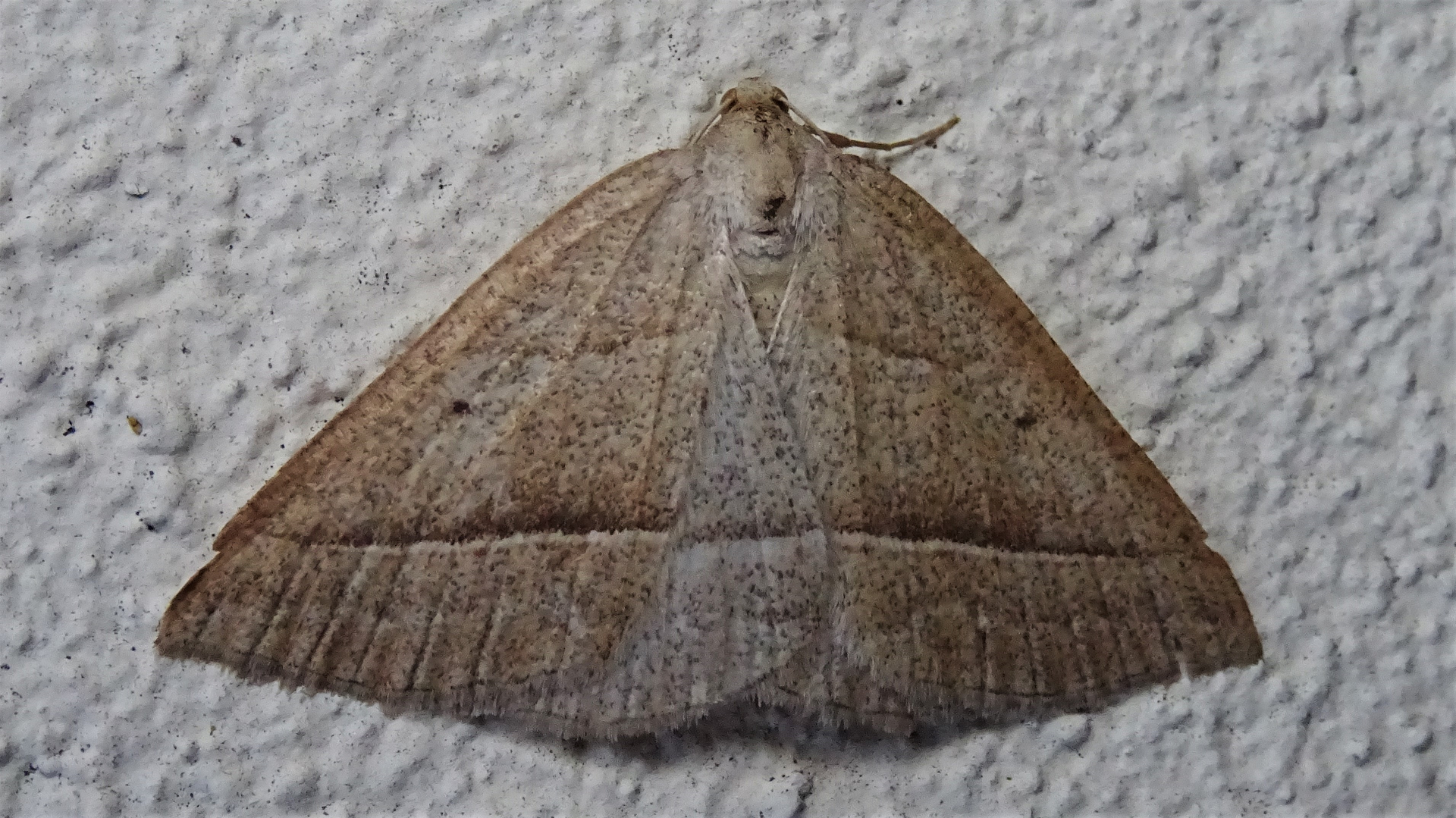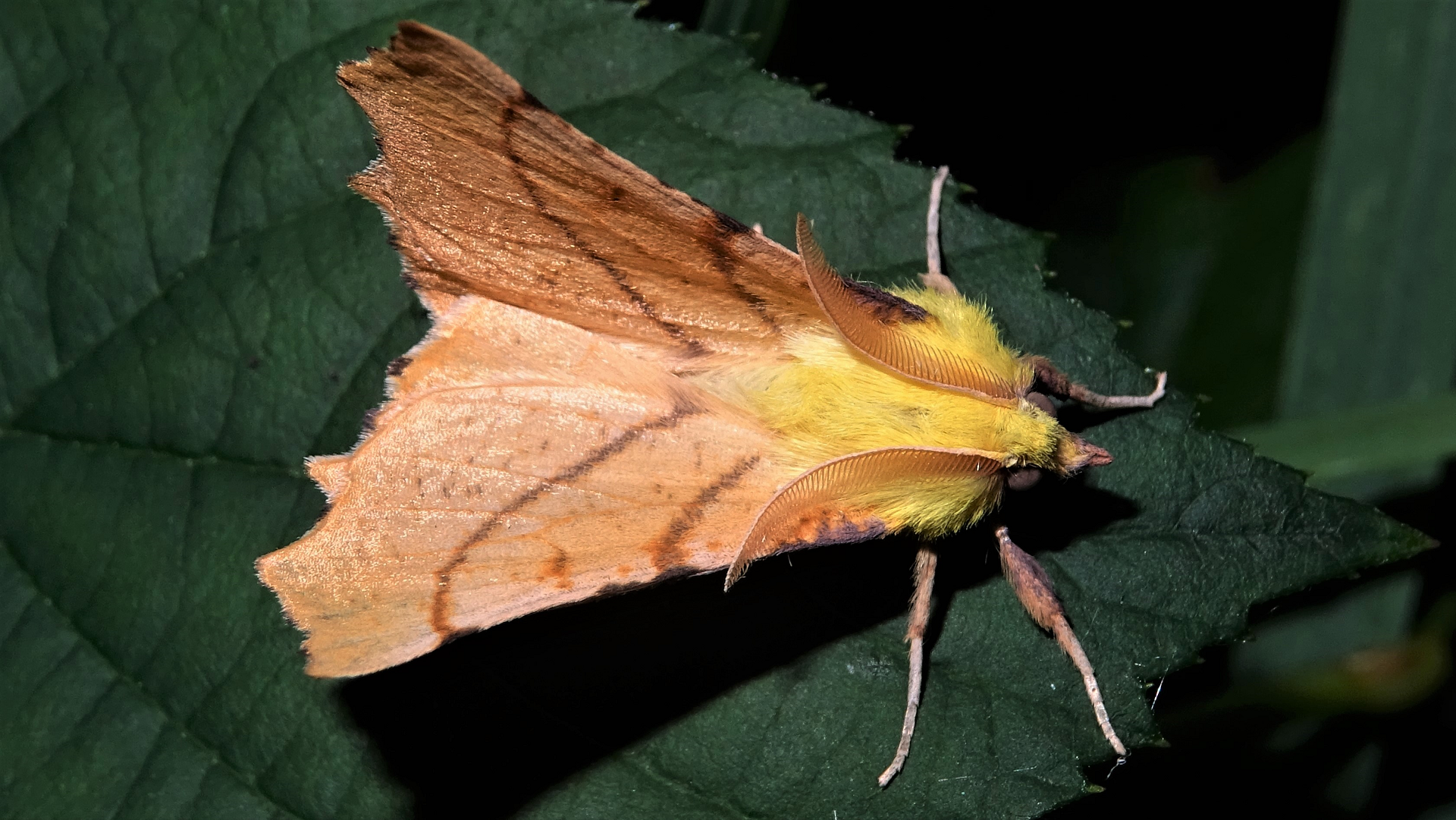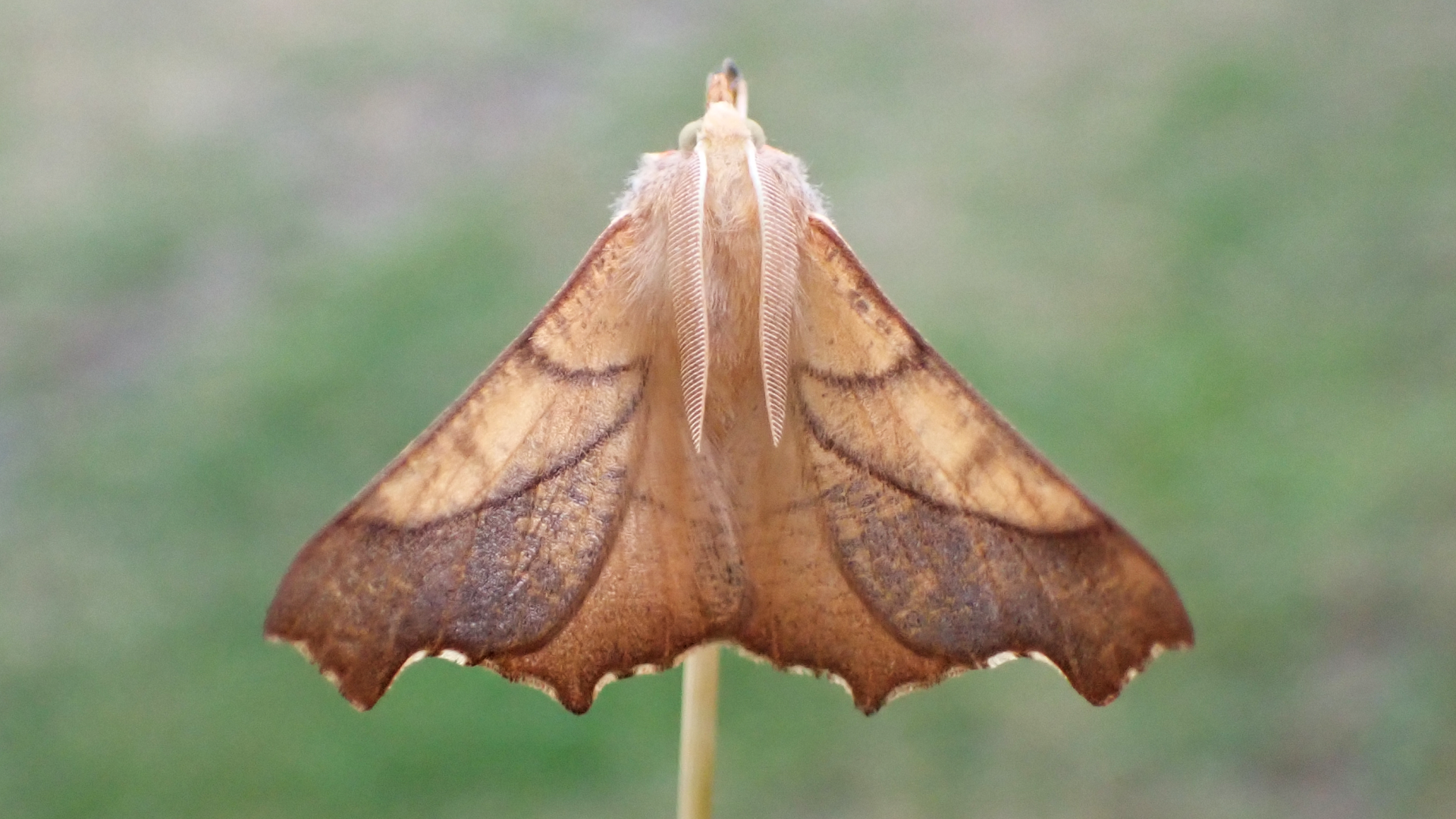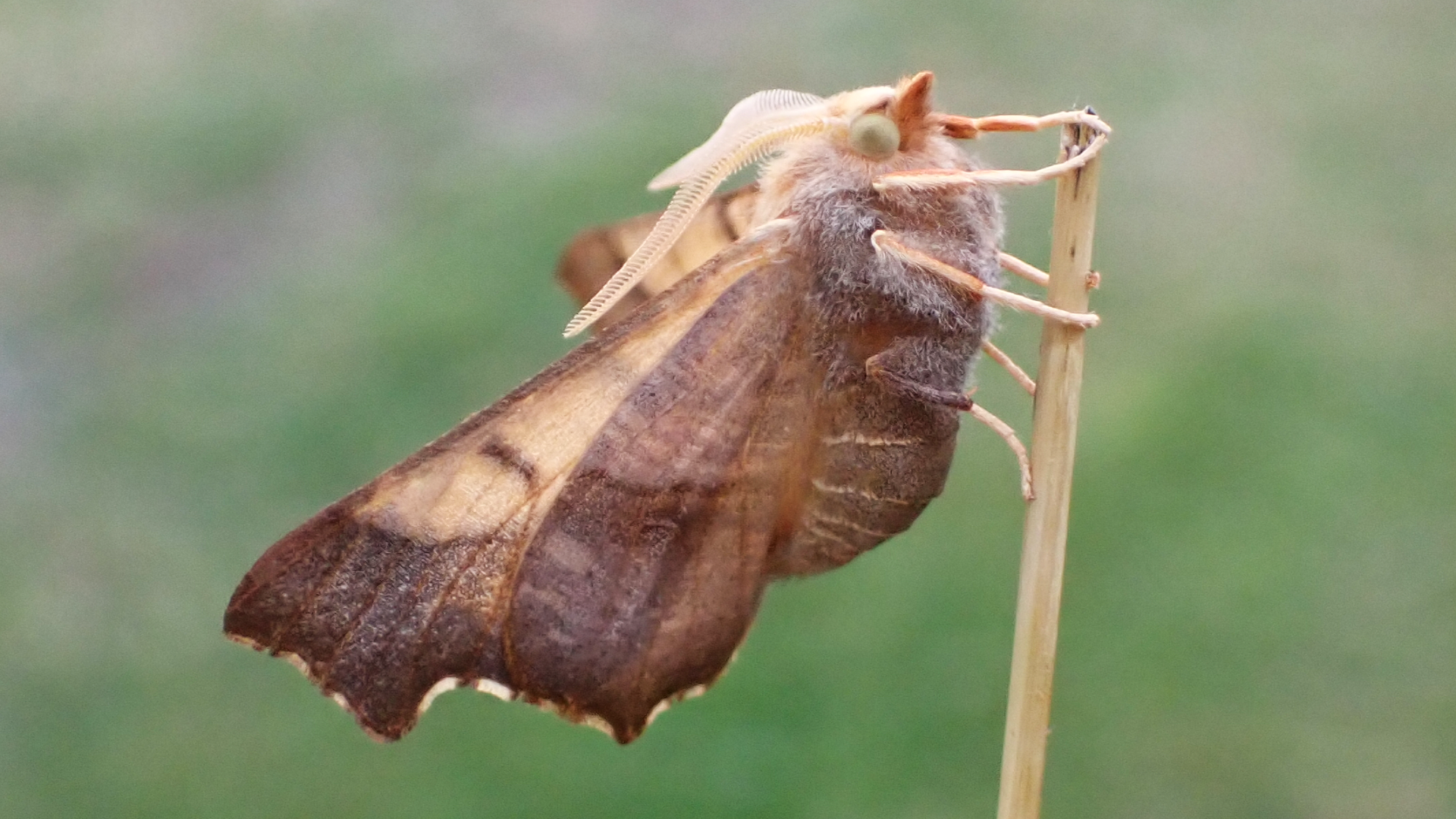Moths are a group of insects that includes all members of the order Lepidoptera that are not butterflies. They are an important part of the food chain providing a vital food source for birds and bats.
70.207
Clouded Border Lomaspilis marginata
Flies from May until July. Its larvae feed on aspen, poplar, sallow and willow.
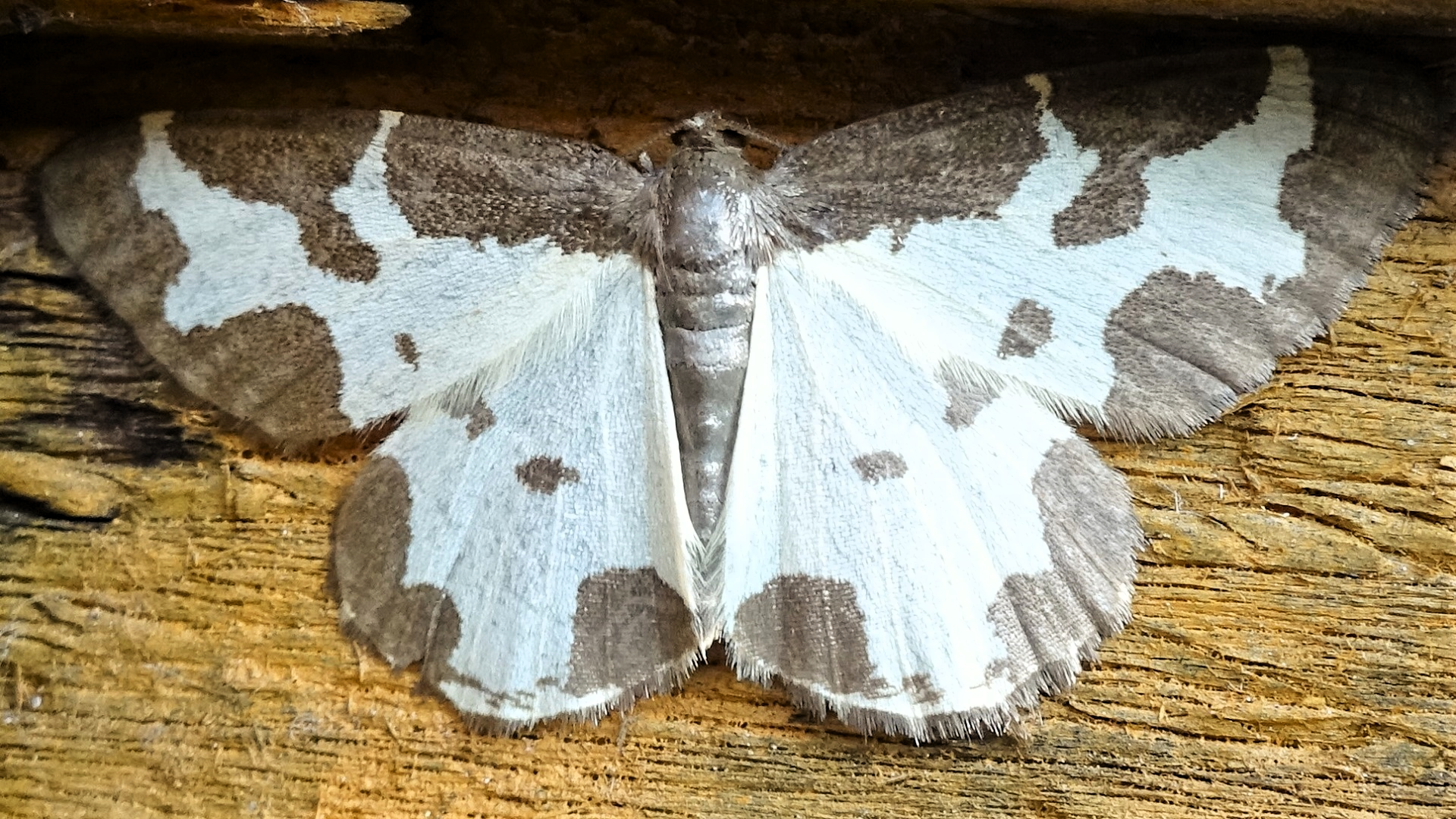
#
70.208
Scorched Carpet Ligdia adustata
Flies from April until September. Spindle is its larval foodplant.
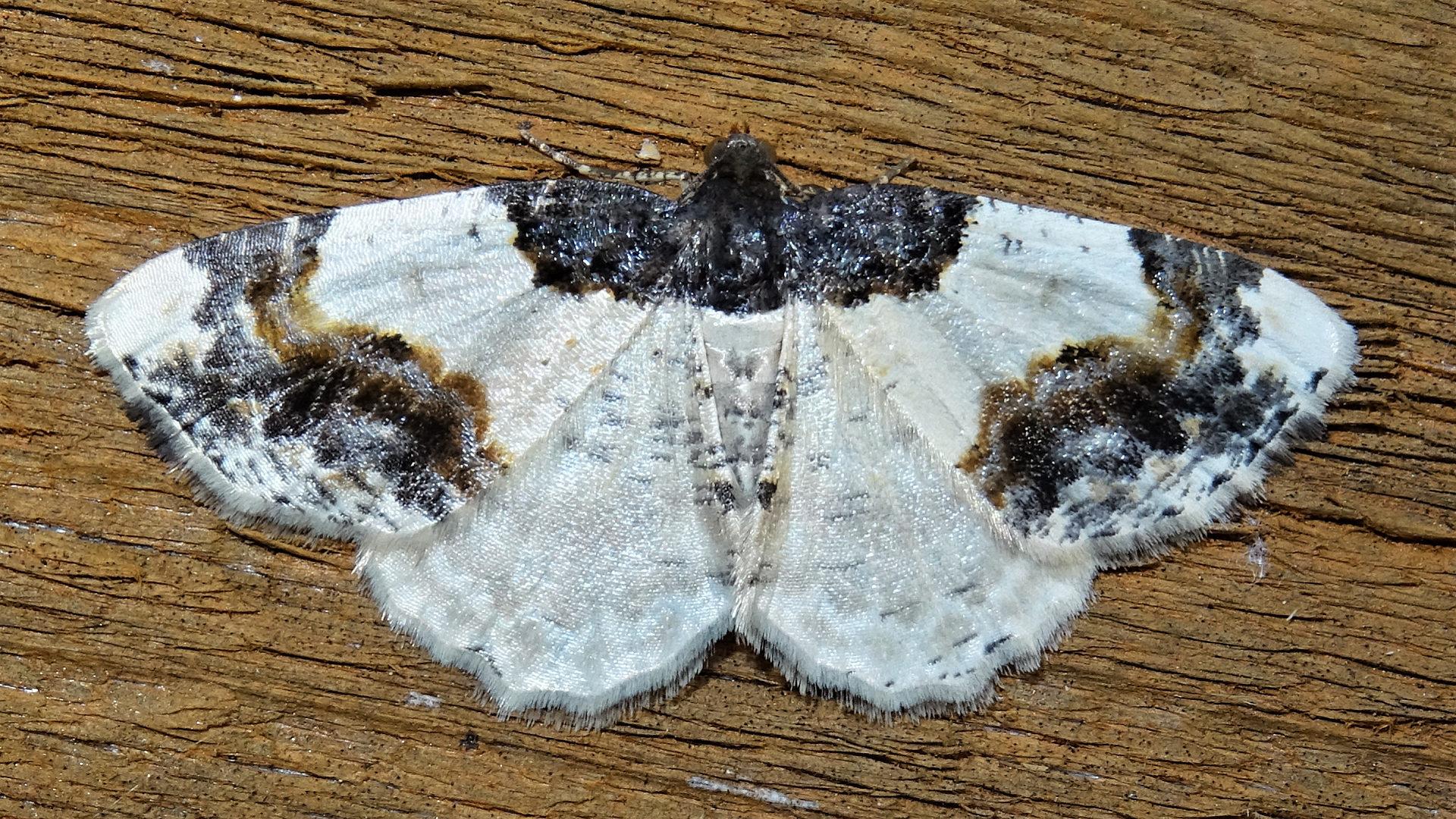
#
70.239
Purple Thorn Selenia tetralunaria
There are two generations of the Purple Thorn each year. The first which flies in April and May has more purple in its colouration. The summer generation that appears in July and August has smaller and paler individuals. This moth can be found in woodland, heathland and scrub. Its larvae feed on broadleaved trees such as Hazel and Birch.


#
70.241
Scalloped Oak Crocallis elinguaria
Common moth that flies during July and August.
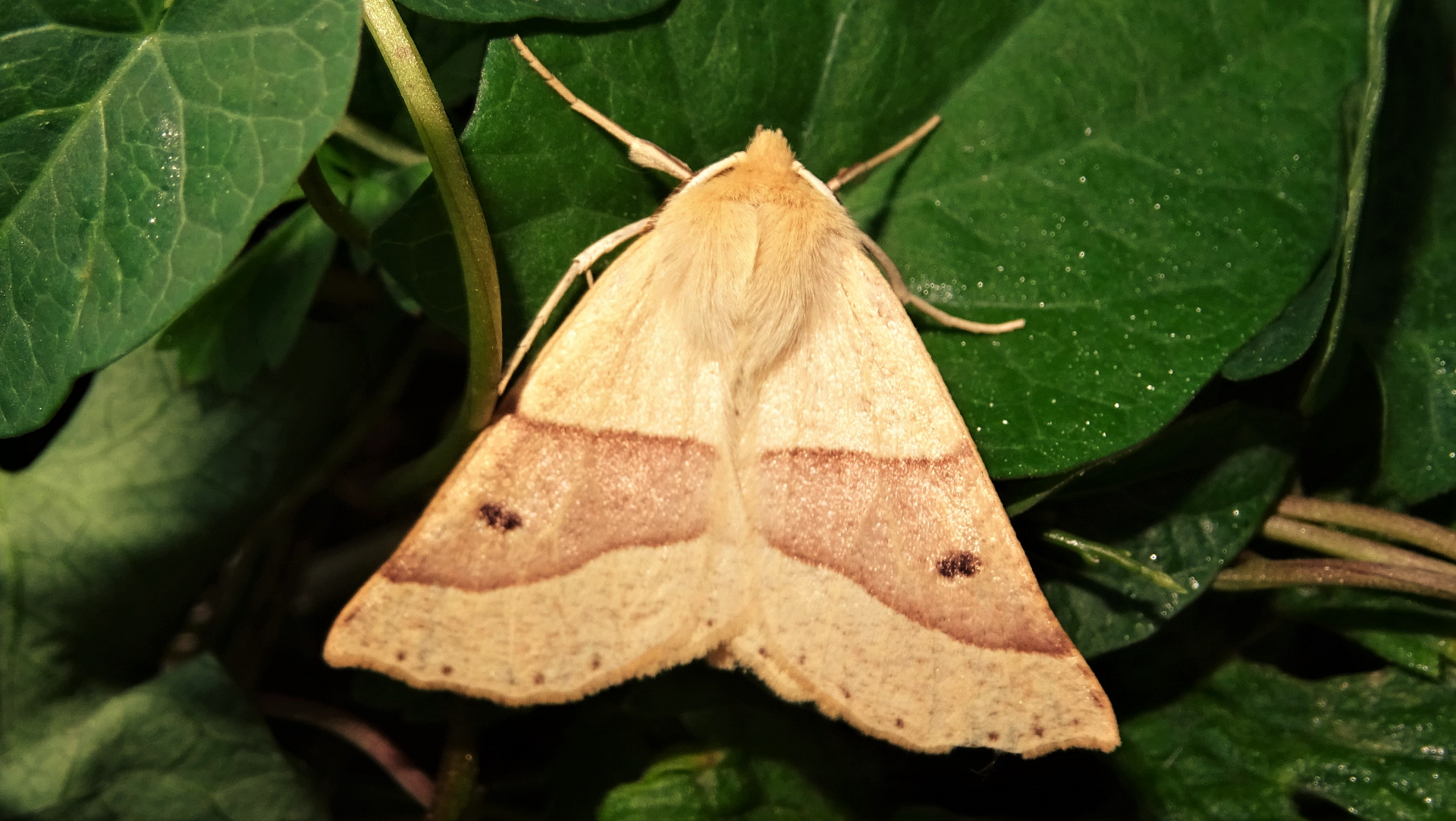
#
70.244
Feathered Thorn Colotois pennaria
Derives its name from the feathery antennae of the male. The species flies late in the year and is found in woodland, parks and gardens. Specimens can range from being rather pale to (usually) more reddish-brown.
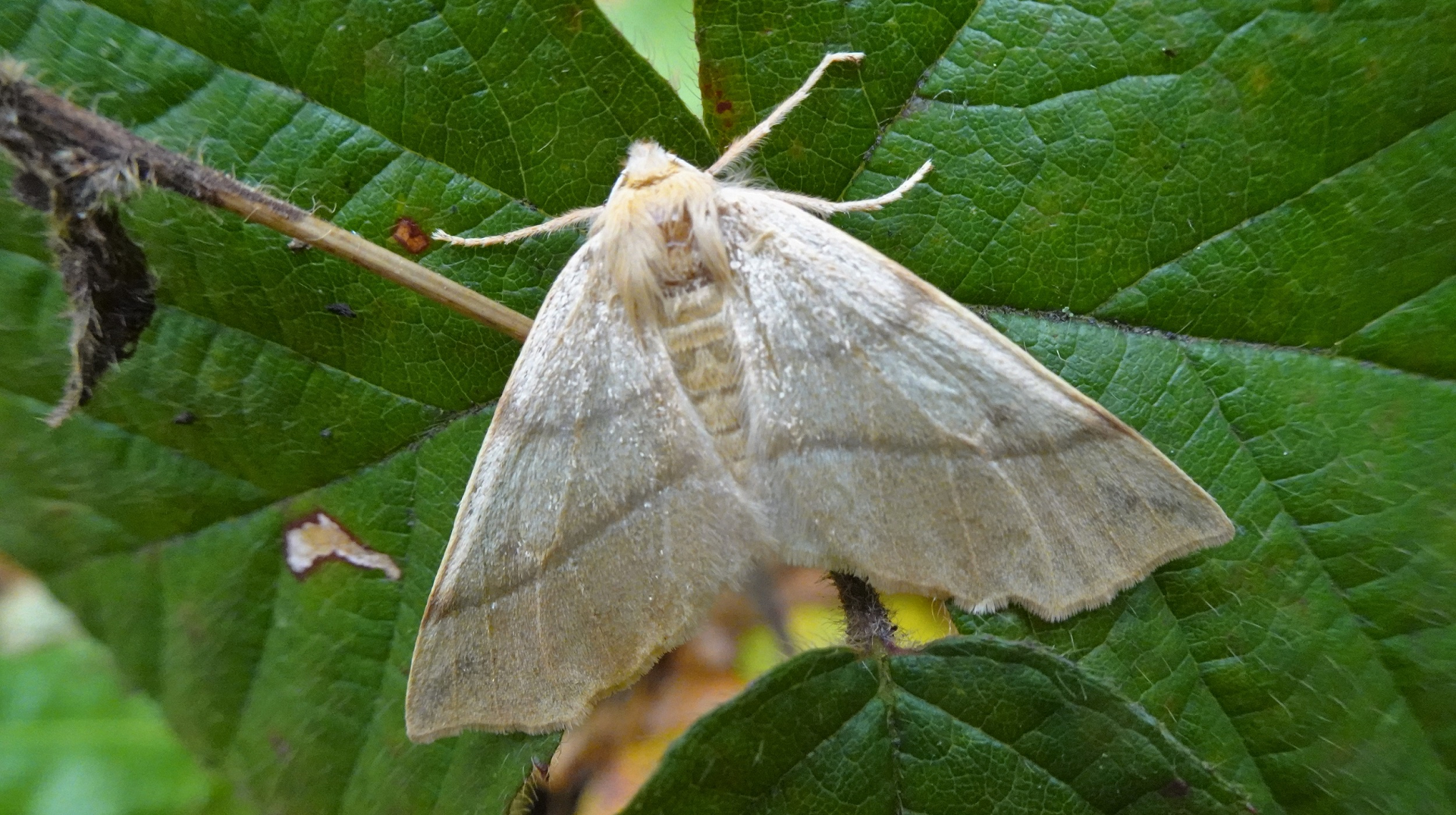
#
70.245
March Moth Alsophila aescularia
Males fly from February until April. Females are wingless and rarely seen. Larval foodplants include Oak, Blackthorn and Hawthorn. Woodland species.
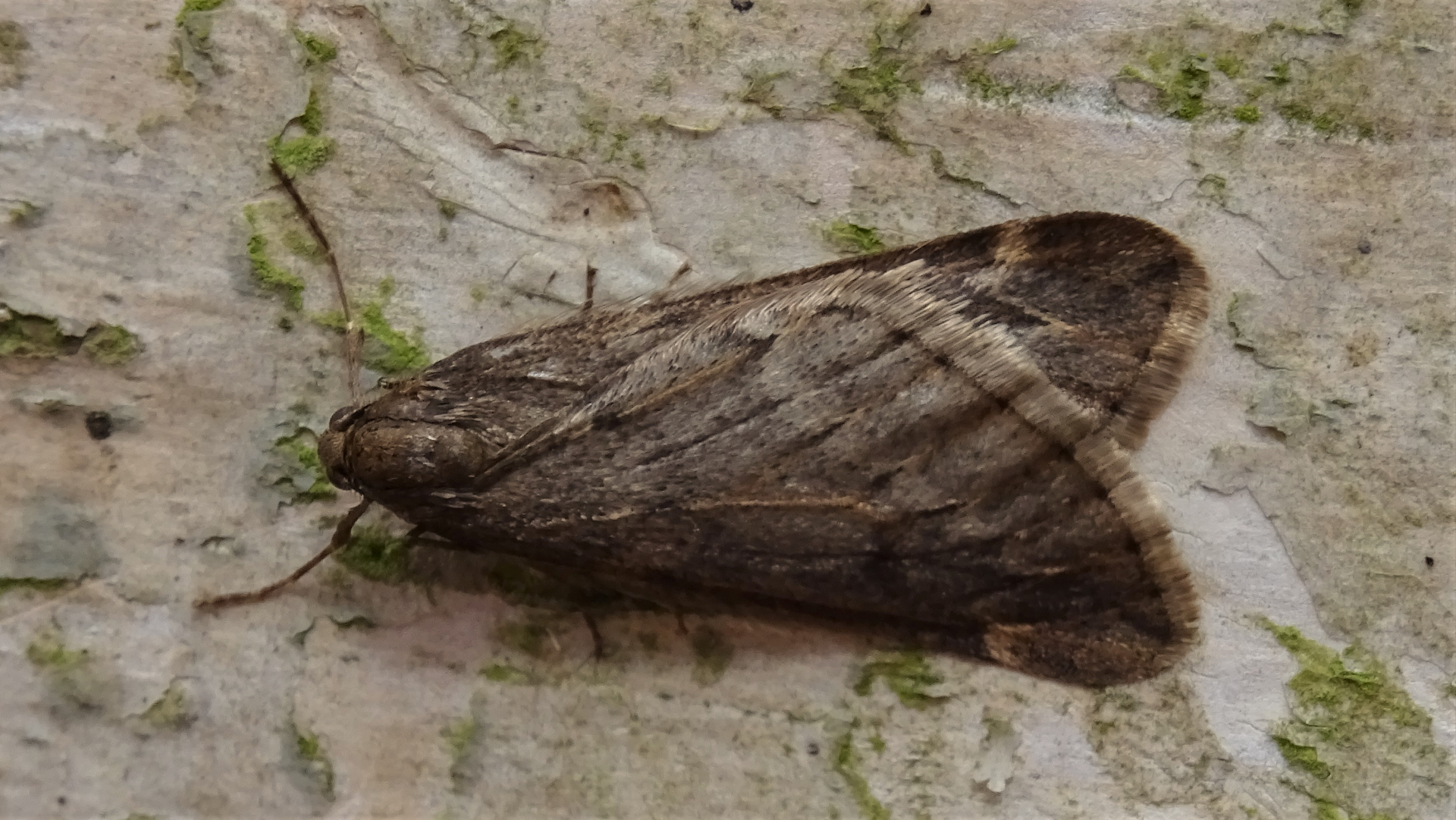
#
70.251
Oak Beauty Biston strataria
Common species flies from February until April. It larvae feed on broadleaved trees.

#
70.252
Peppered Moth Biston betularia
Flies from May until August. Darker moths evolve in polluted locations which allows them to blend in better with their blackened surroundings. The larvae feed on small plants, trees and shrubs.
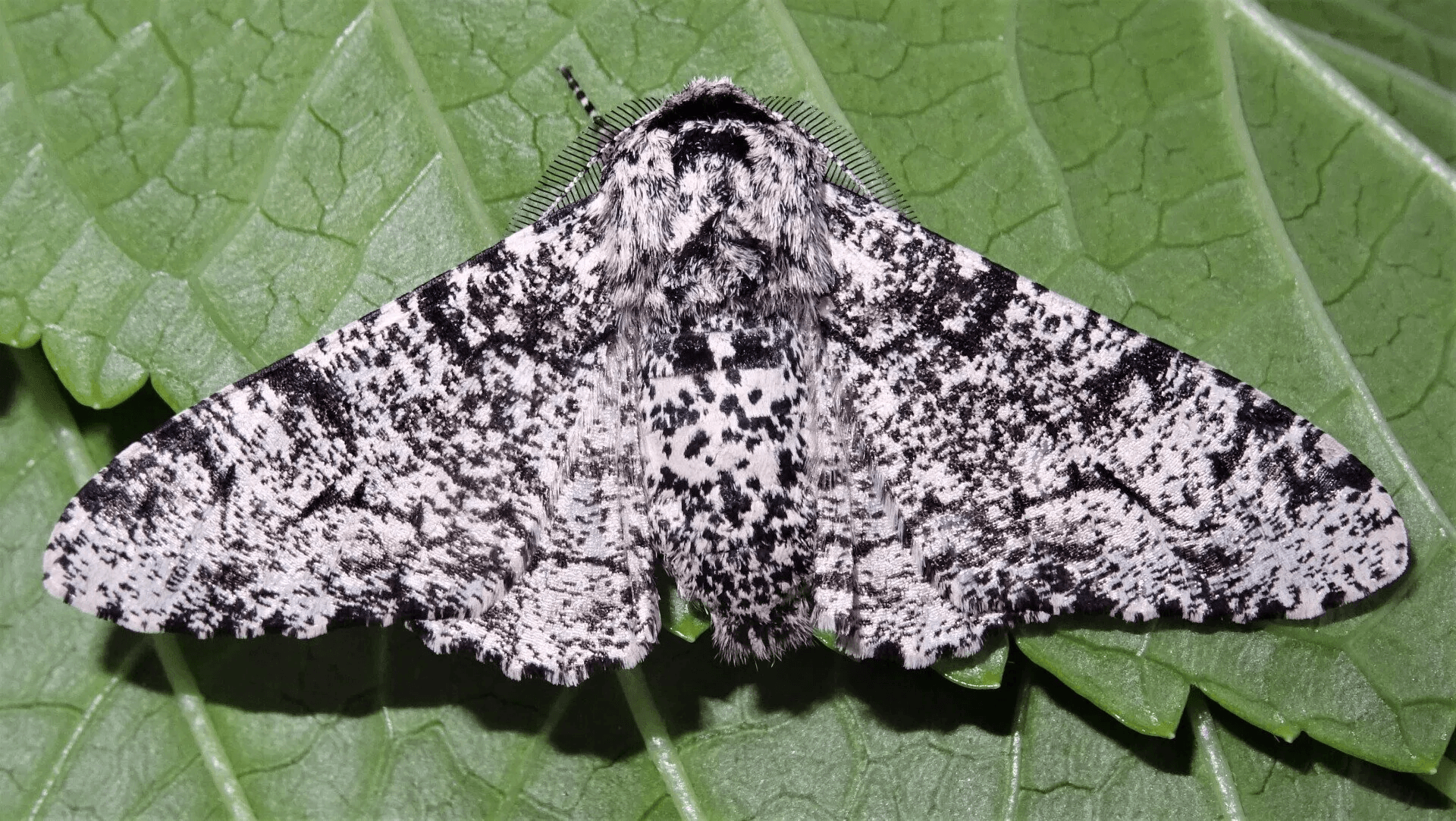
#
70.253
Spring Usher Agriopis leucophaearia
Common species that flies from January until March. It has variable colouration ranging from almost black-and-white to a drab grey. The females are wingless. Its larvae feed on English and Sessile Oak.
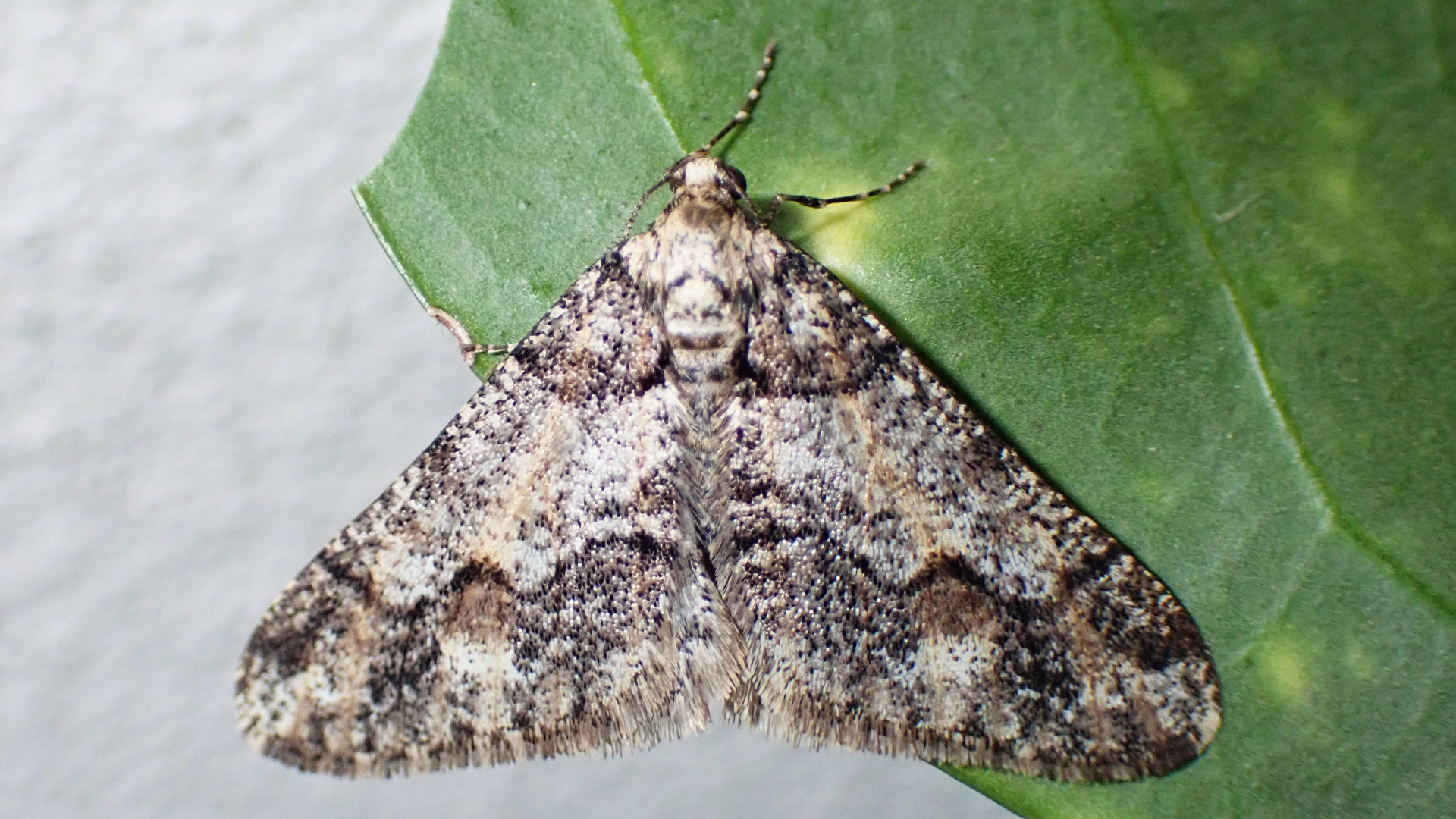

#
70.254
Scarce Umber Agriopis aurantiaria
Fairly common in woodland and bushy locations despite its name. Males are on the wing from November to early December and have a wingspan of 27-35mm. Females are wingless and are mainly discovered when they are climbing tree trunks. The caterpillars feed on a range of deciduous trees.
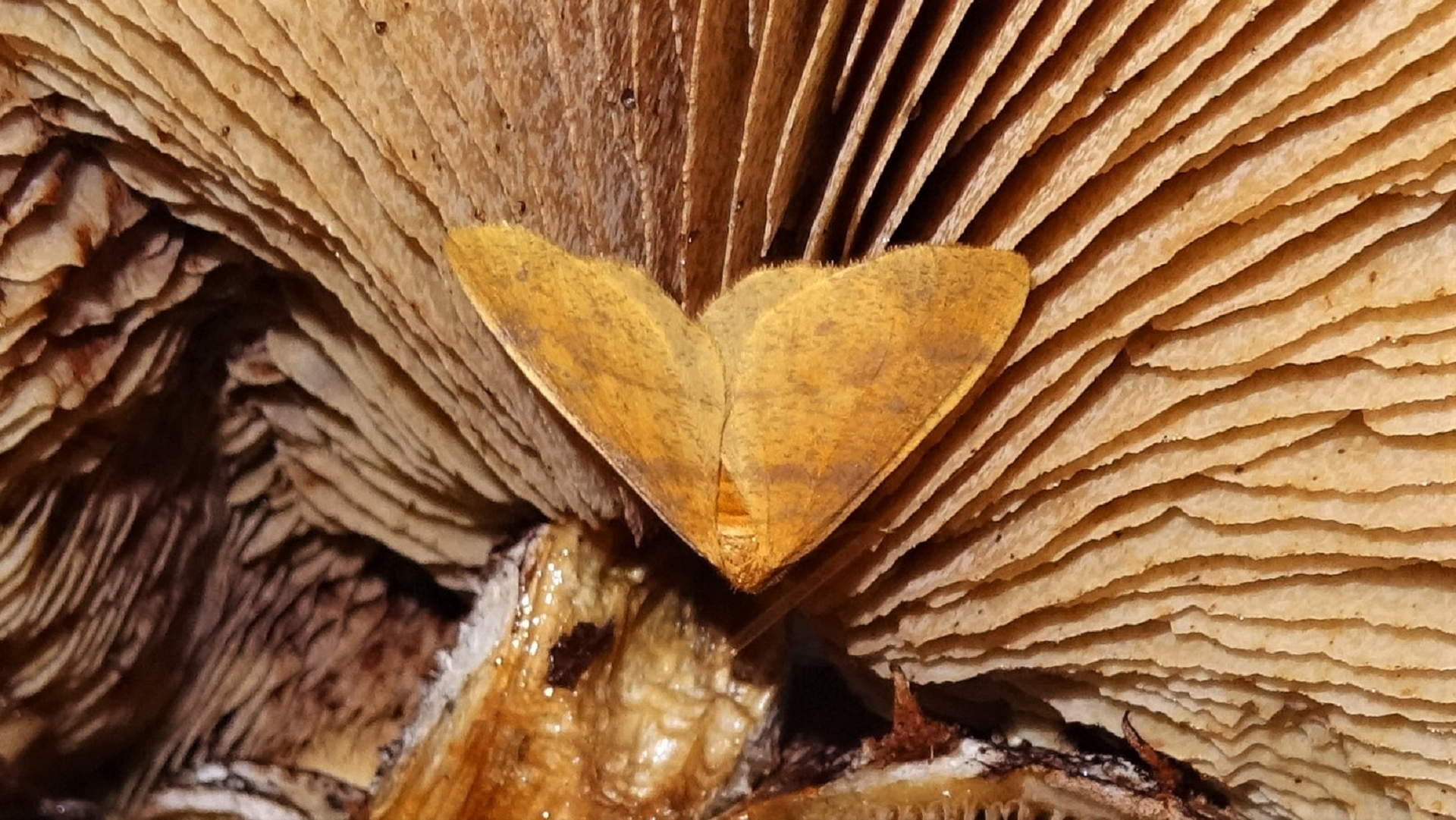
#
70.265
Mottled Beauty Alcis repandata
Flies in June and July. Its larvae feed on woody trees. This is a rather variable species, similar to Willow Beauty but not having the cross-lines converging at the dorsum.
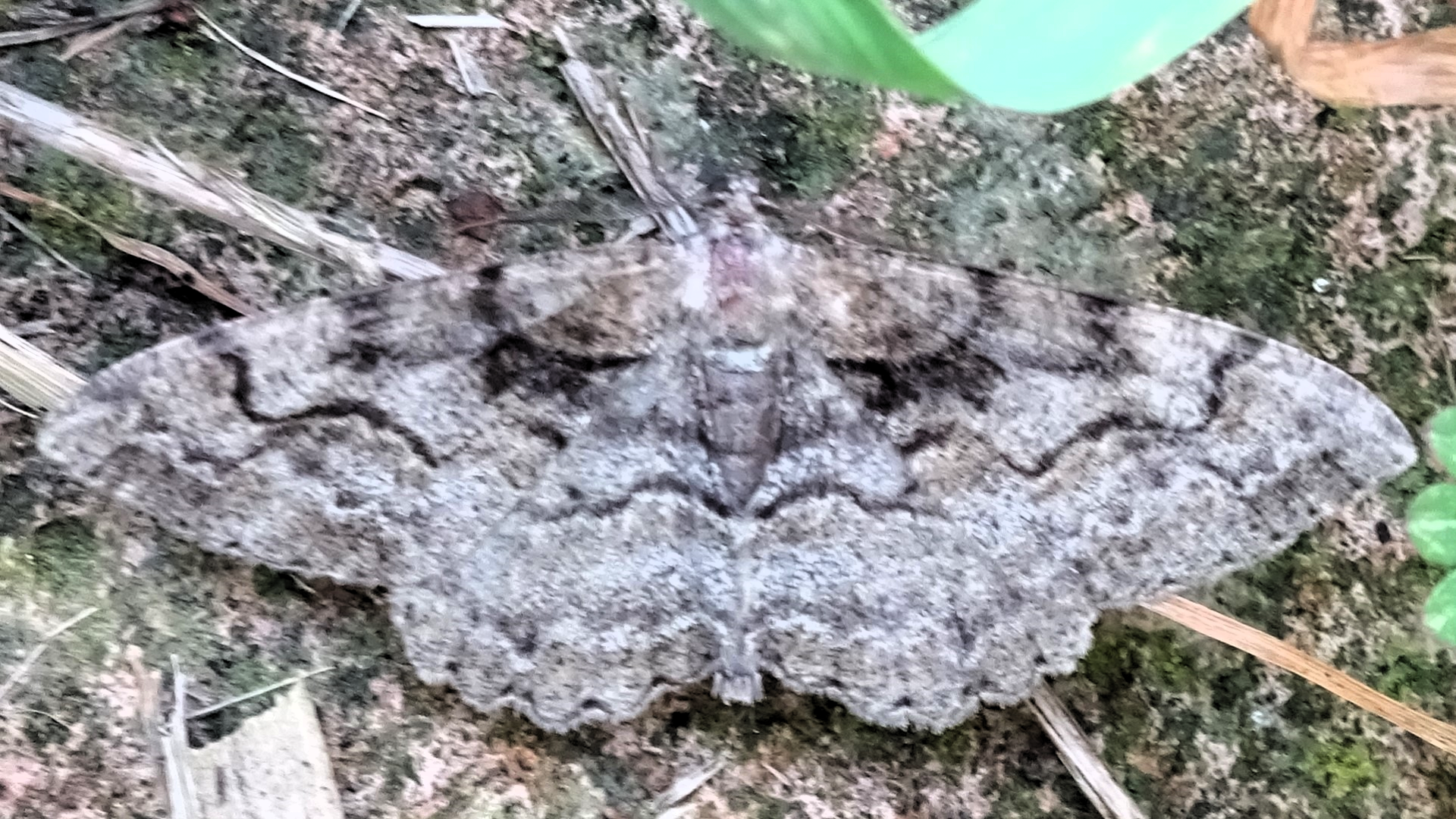
#
70.280
Clouded Silver Lomographa temerata
Frequents woodland and suburban habitats from May to August. Its caterpillars feed on blackthorn and hawthorn.
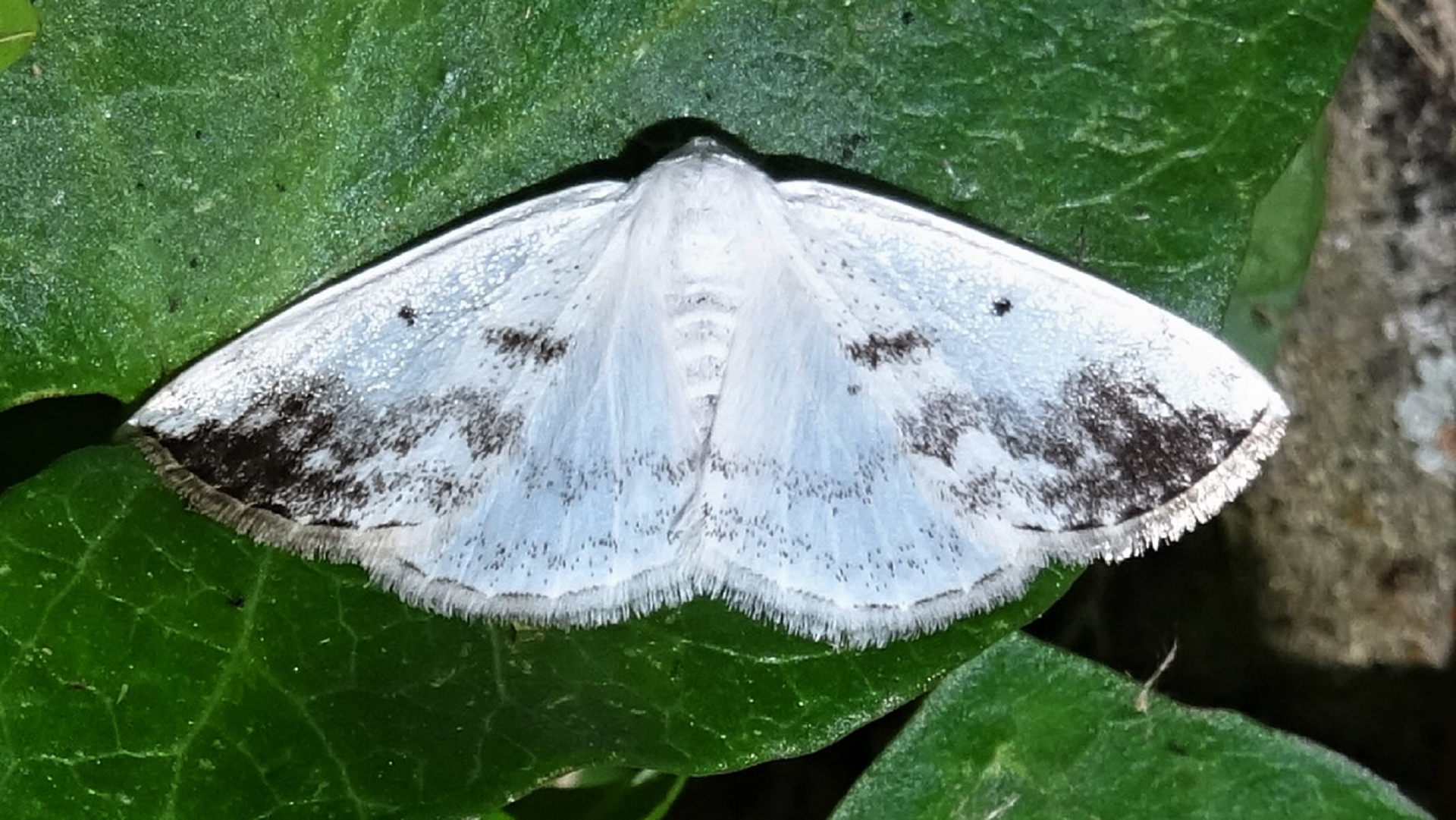
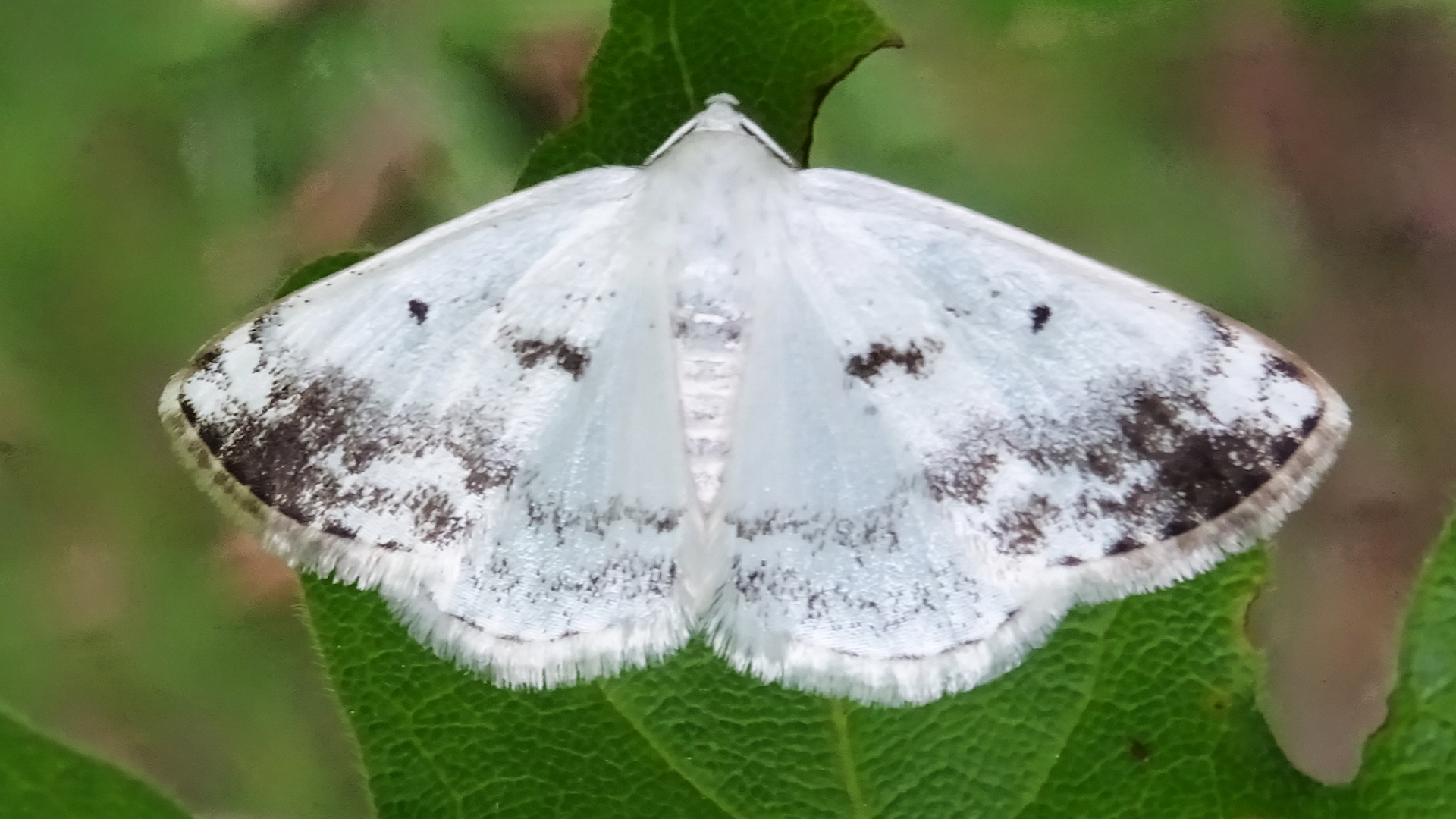
#
70.283
Light Emerald Campaea margaritaria
Emerald green when newly emerged fading to white after a few days. There are two generations each year; the second is smaller and darker. The larvae feed on a range of trees and shrubs.

#
70.300
Blotched Emerald Comibaena bajularia
Normally flies at night; males are attracted to light more than females. With age the green frequently fades to creamy white. Caterpillars start appearing late July but are difficult to spot because they attach leaf pieces to their bodies as a means of camouflage.
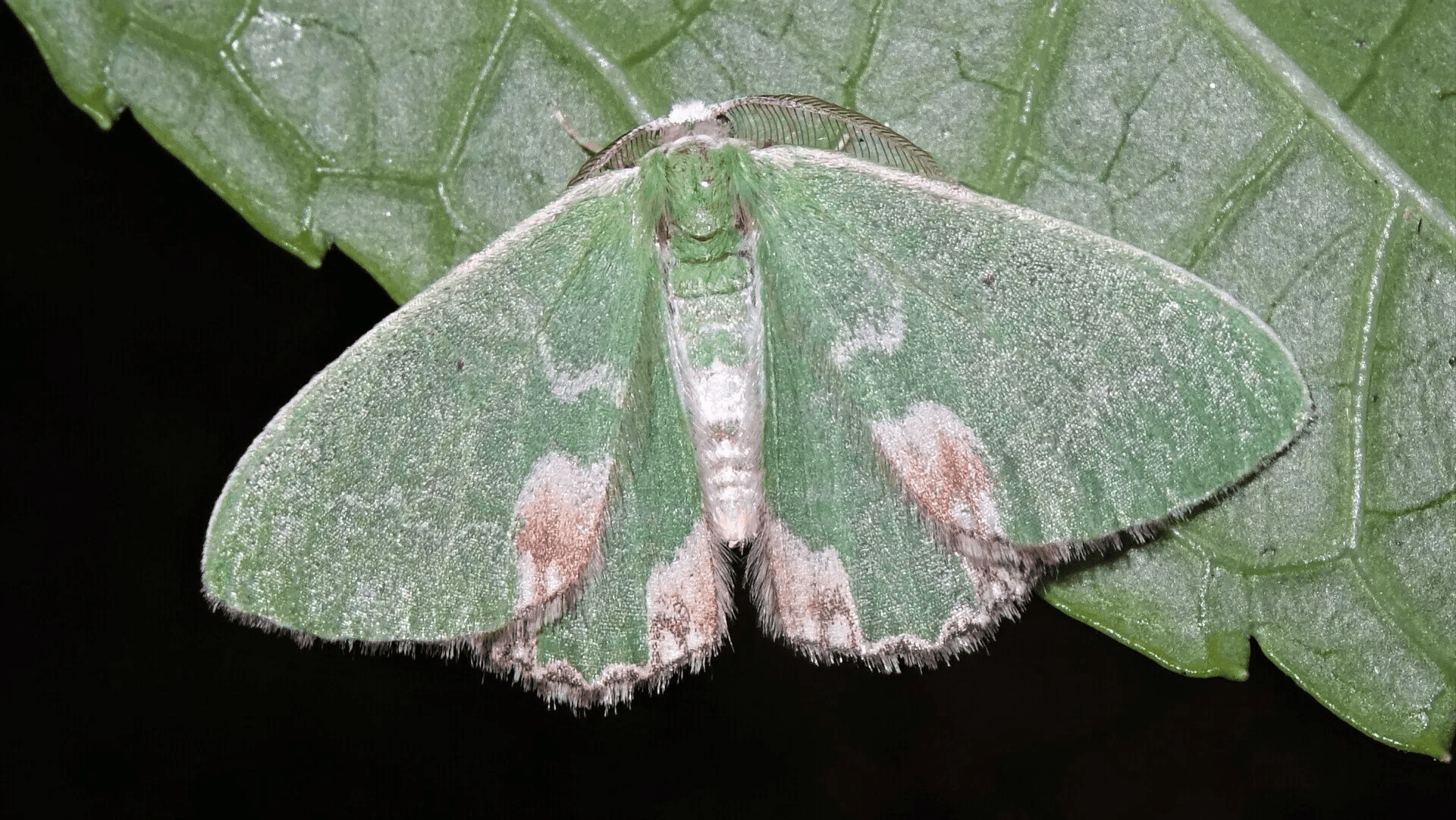
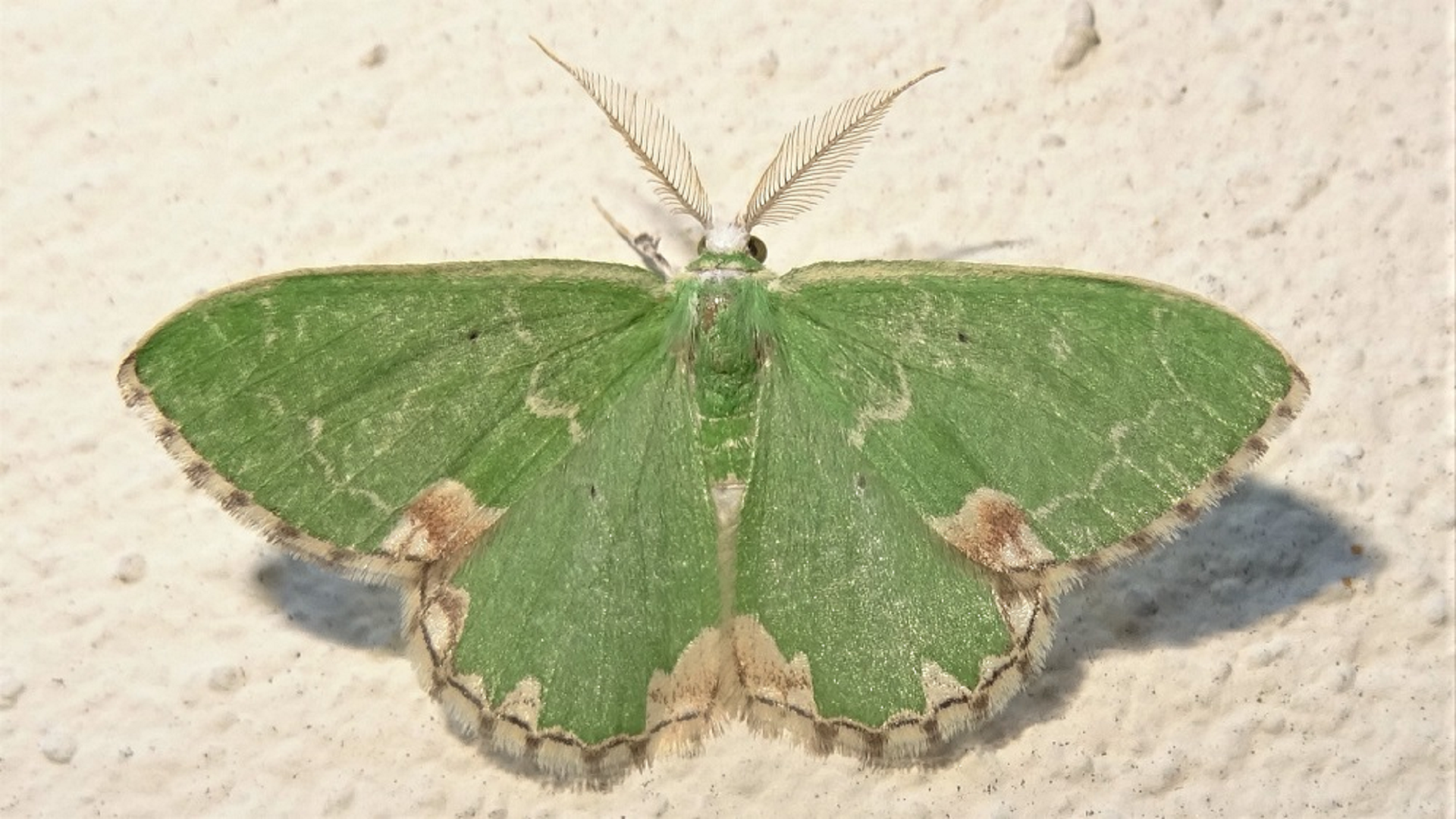
#
71.001
Oak Processionary Thaumetopoea processionea
Oak Processionary moths were accidently introduced to England in 2005. They are now established in Greater London and are able to defoliate whole oak trees. Their larvae can cause rashes, eye irritation and breathing problems. They should not be touched. The larvae are usually seen from late May until July and adults fly from July until September.
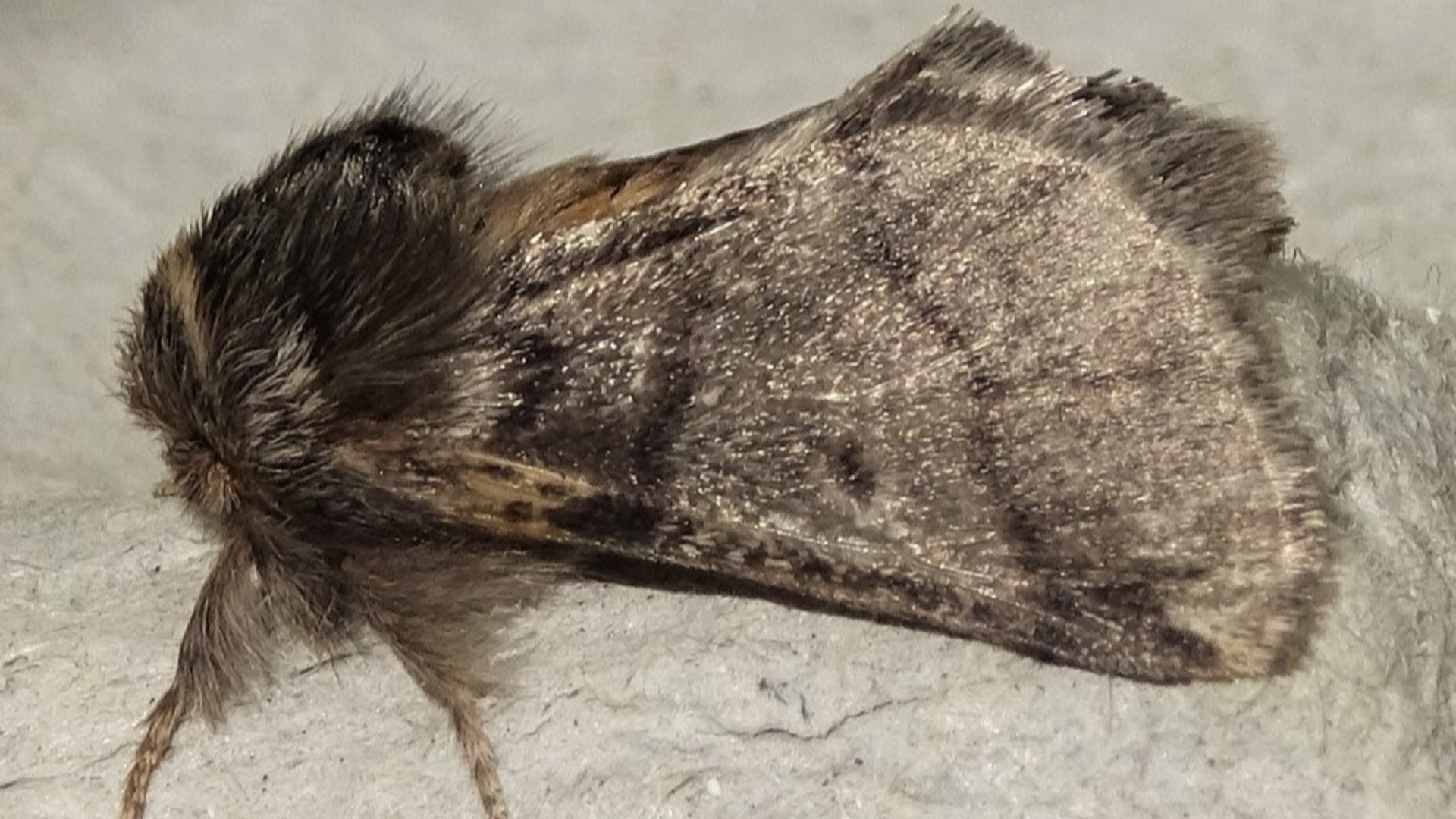
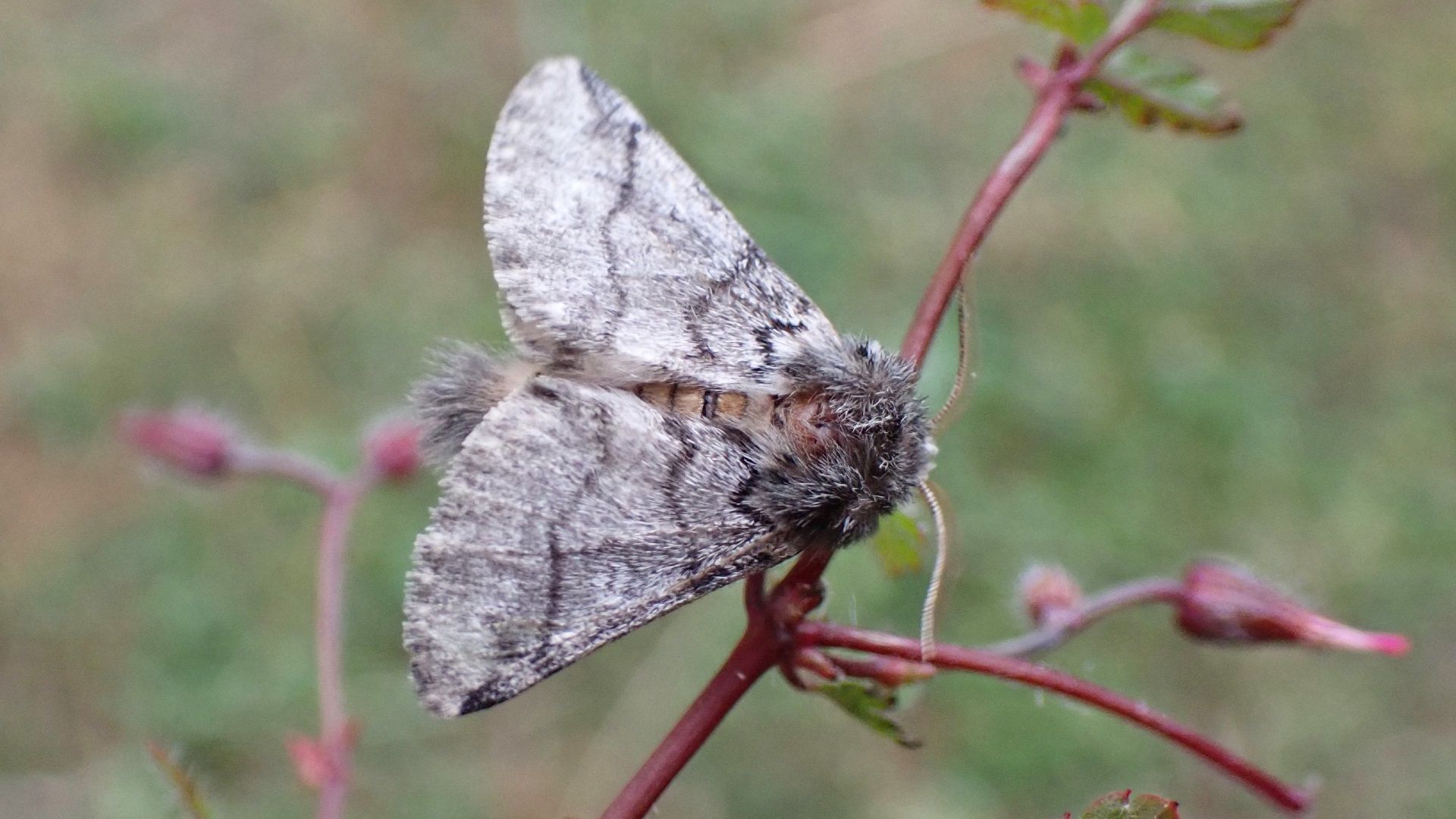
#
71.003
Puss Moth Cerura vinula
On the wing from May to July. Caterpillars (up to 65mm long) are seen from July to September feeding on Poplar and Willow usually low down on saplings. When ready to pupate the caterpillar makes a tough cocoon from chewed wood and silk. If disturbed by a predator the caterpillars raise the head and wave extendable pinkish flagellae from their twin tails. If this warning is ignored the caterpillar is able to squirt formic acid from a slit under the mouth as a defensive measure.
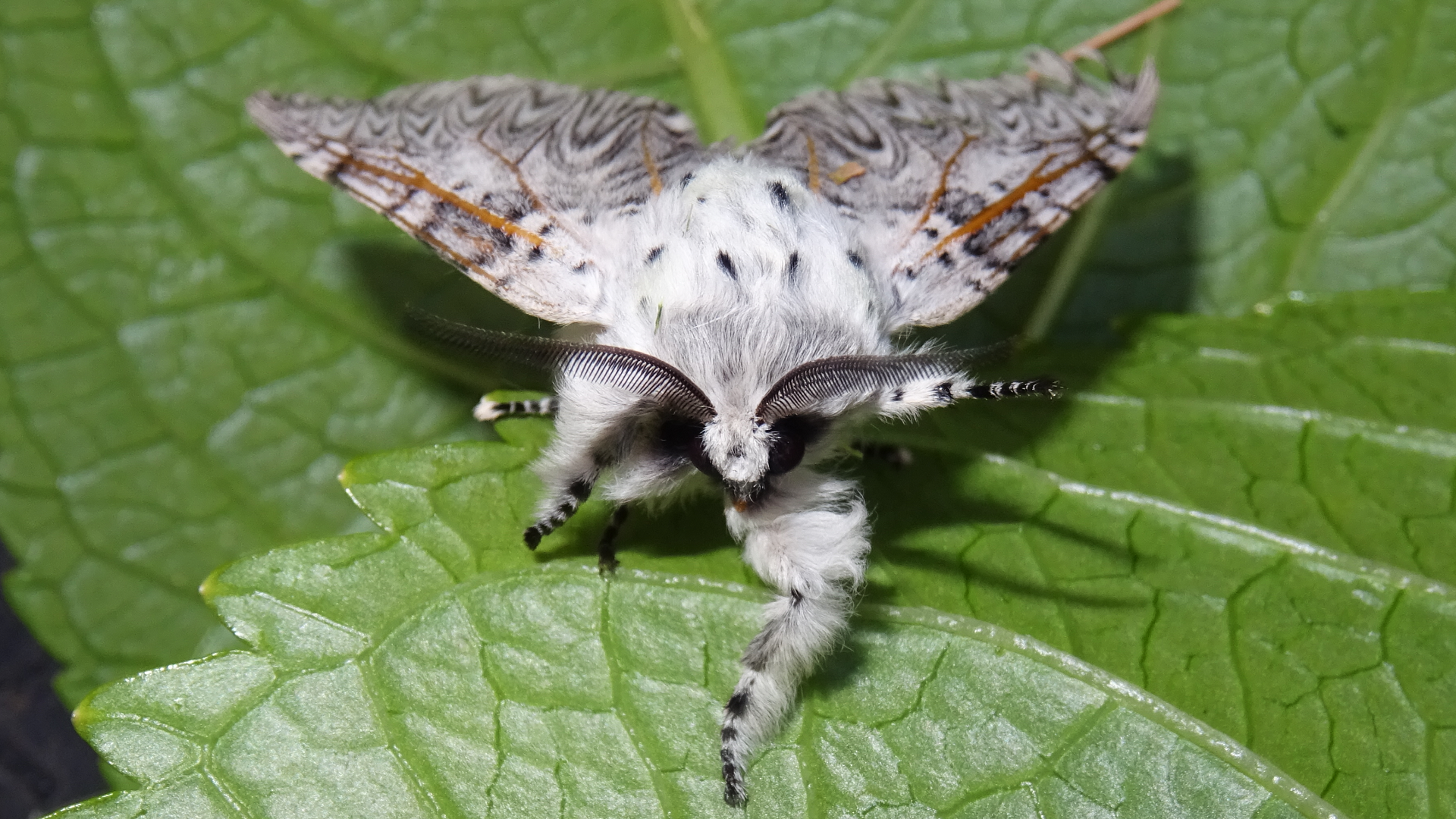

#
71.012
Iron Prominent Notodonta dromedarius
On the wing from May until August. Its greenish hump-backed larvae feed mainly on Birch and Alder trees. Maximum wingspan 40mm.
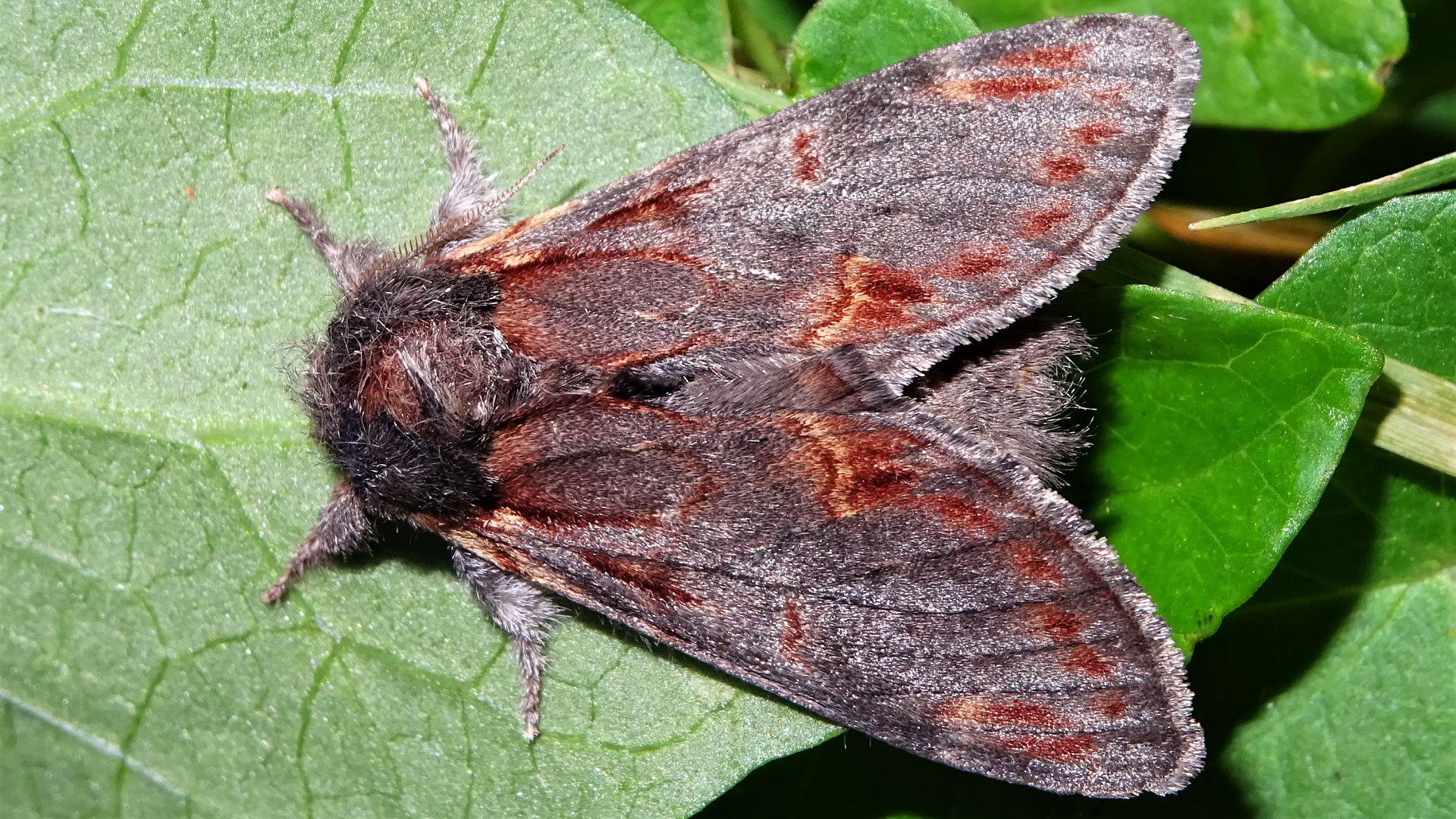

#
71.017
Swallow Prominent Pheosia tremula
Flies in two generations from April until June and in August. The larvae feed on aspen, poplar, sallow and willow.
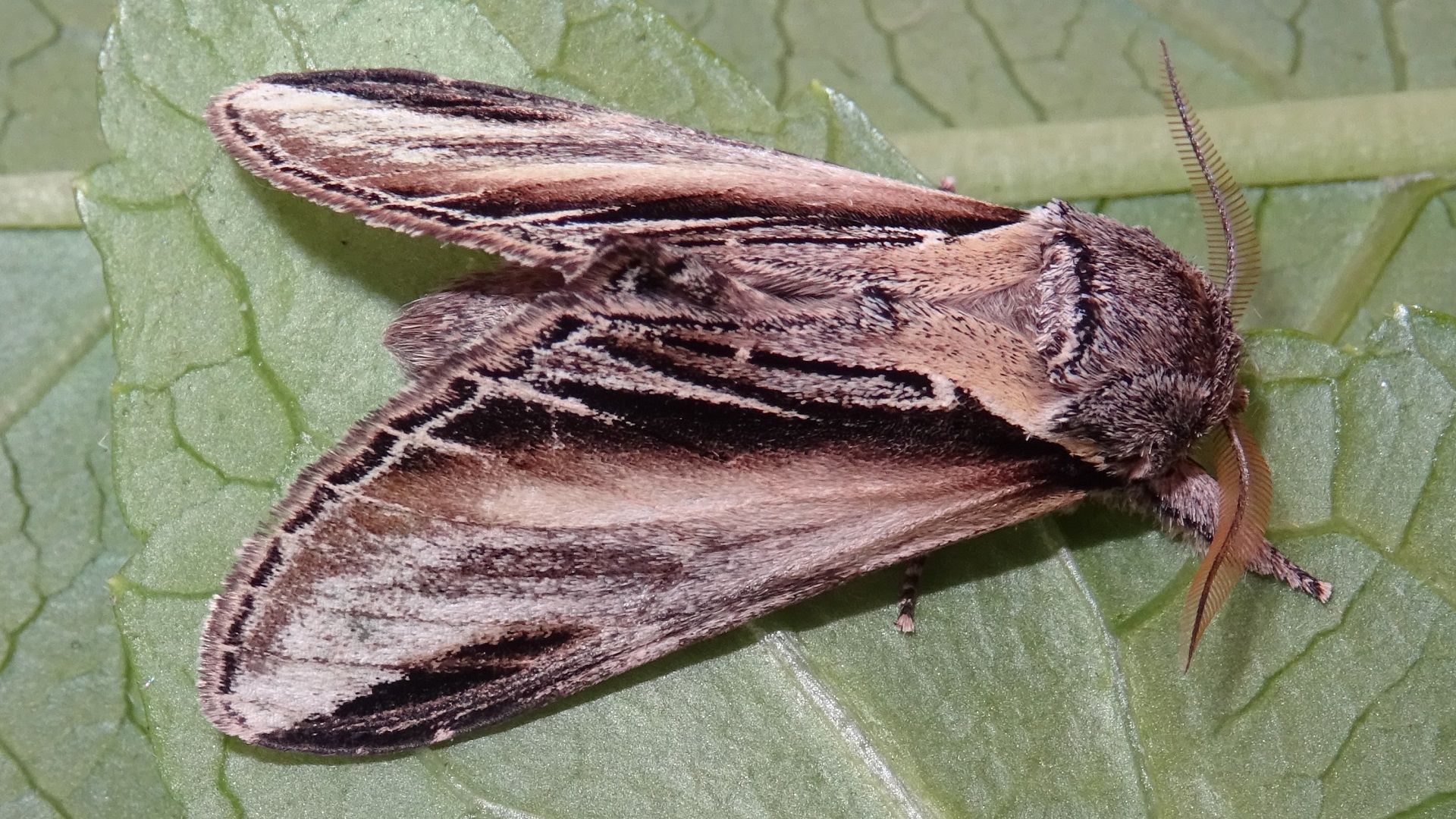
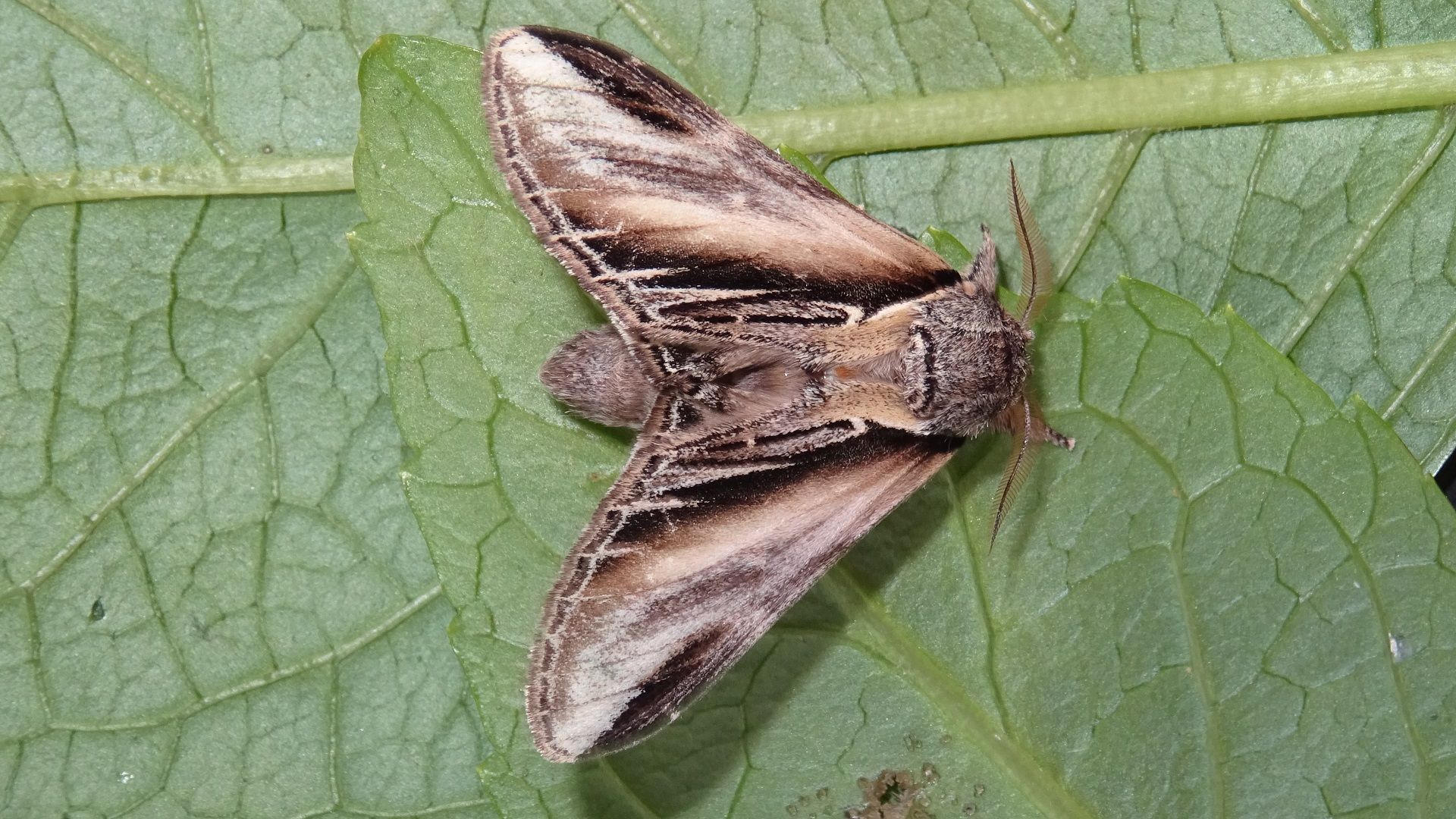
#
© hainaultforest.net. All rights reserved.


